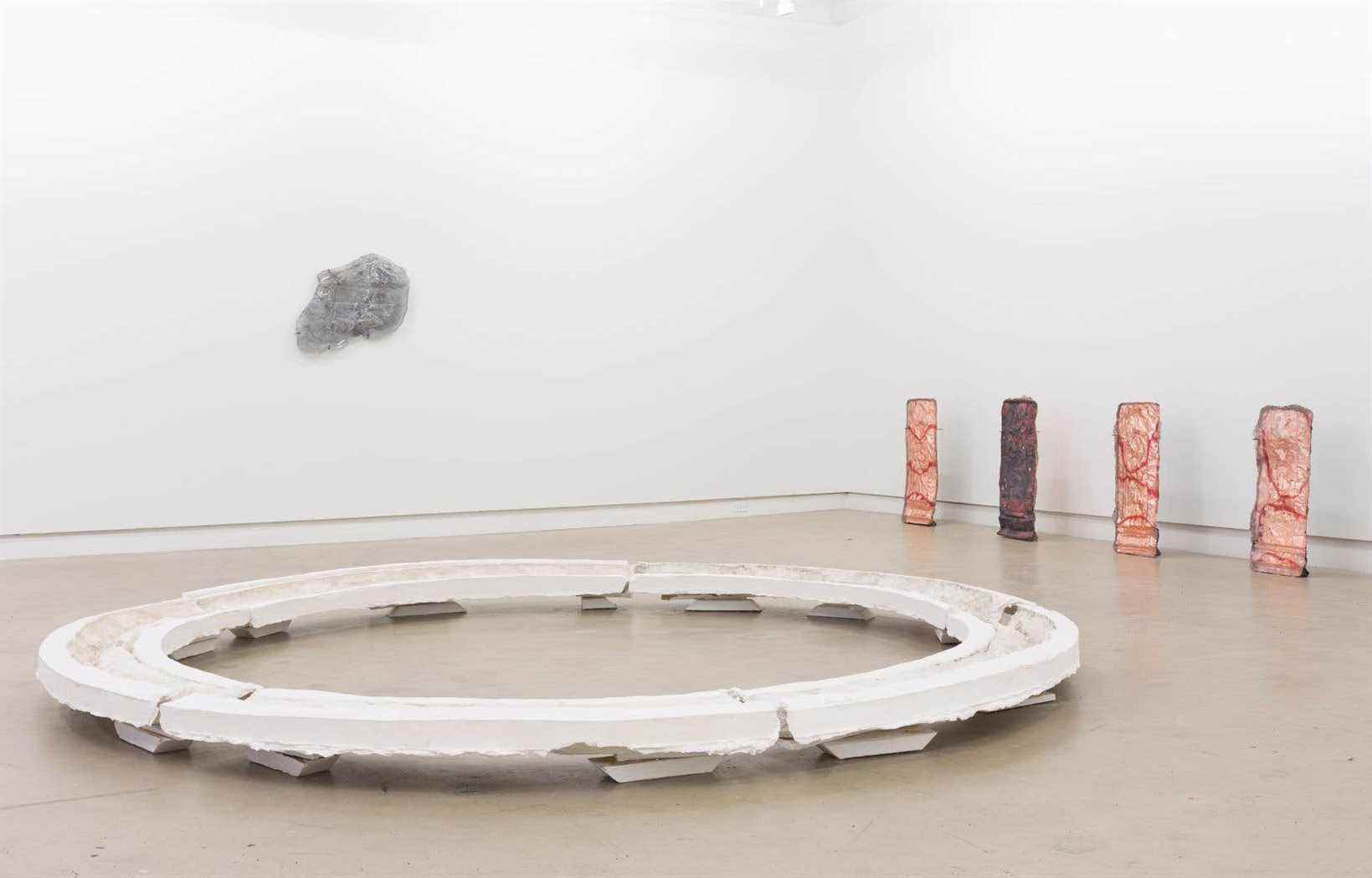What traces, what imprints and even what deep scars will the COVID-19 pandemic leave on our societies? And on the art world? Already, several US museums have sold works to cover revenue drops due to fewer visitors. In 2020 and 2021, this was the case for the Brooklyn Museum and the Metropolitan Museum of Art in New York. Even the Royal Academy of Arts in London has raised the possibility of selling its national treasure, its famous Tondo Taddei sculpted by Michelangelo. And we could also mention all these artists who for two years have decided to change careers for lack of professional opportunities.
Even in the artwork themes, we are beginning to see the impact of this pandemic and subsequent government responses, such as its imposed curfews and isolations, sometimes in a confusing way to say the least. This is the case in the most recent exhibition by artist Alexia Laferté Coutu, an exhibition entitled Sanatoriums. A creation that managed not to fall into a simple illustration.
Should we mention the book The illness as a metaphor by Susan Sontag? Laferté Coutu gave birth to a work rich in meanings which artistically challenges the response offered by our societies to another epidemic, that of tuberculosis, also called the “white plague”, a scourge which persisted until the 1950s. The artist thus seems to lead us to reflect on the present pandemic and the responses offered to it by our contemporary world.
Using clay, Laferté Coutu began by making impressions of architectural elements of sanatoriums built in Montreal and Sainte-Agathe. People who saw her could believe that she was repairing the stone and the ornaments of these buildings. Symbolically, she was more interested in the memory and the principles that saw the birth of these buildings. After bringing these prints back to her studio, she used them to create, in negative, a plaster mold pressed with sand which allowed her to cast glass, an opaque glass, sometimes colored, according to the variations made to her creation process.
She thus created glass works with organic and strange shapes. A work that will evoke a post-minimalism art, that of Eva Hesse or the young Bruce Nauman, who was fascinated by negative spaces, sometimes those of his body, showing how a world surrounds our lives, revolves around ‘they.
Ordering the chaos of the pandemic
After the first sanatorium—a word that means “fit for healing”—was built in Germany in the 1850s, many countries in Europe and North America followed suit. In Quebec, at the beginning of the XXand century, several of these establishments were built, including the Prévost sanatorium, the Laurentien sanatorium, and the Bourget sanatorium, which was part of the Saint-Jean-de-Dieu hospital. In an attempt to cure tuberculosis, we groped our way, we improvised sanitary measures and even multiple treatments, often ineffective.
In these buildings where it was hoped to treat tuberculosis, a scourge that medicine could not cure, a certain architectural aesthetic was put in place in connection with the concept of hygiene which developed from the 19th century.and century. The sanatoriums, orderly spaces, were built with many windows. As the presentation text – signed by François Lemieux – explains, in the absence of really effective treatments, the doctors and architects of the time had invented places where “the imagination of well-being and cleanliness […] was embodied in particular in the increasingly widespread use of glass; a material that allows light to pass through, allows stains to be seen and is easy to wash”.
But these places, which were supposed to mark the difference between the sick and the healthy, quickly became places of isolation, exclusion and confinement. In his work, Laferté Coutu turns the desire for transparency and cleanliness of these places into an opaque, secret structure, where good intentions are transformed into a stifling model. Could these sanatoriums evoke the way in which, nowadays, we isolate, in order to “protect” them in an often arbitrary way, the elderly, sometimes alone in their room or their small studio located as much in CHSLDs as in retirement homes?
Laferté Coutu also tells us how this incarnation of hygienism in architecture was also found in urban planning with the construction of fountains in public spaces. This is the response found to the poor living conditions of the workers who suffered from a high mortality rate due to tuberculosis. However, it was industrialization that created unhealthy hygienic conditions for the poorest classes and made working-class housing a real breeding ground for tuberculosis.
In the center of the gallery, a work will evoke this. The visitor will indeed find there the inverted molding of a fragment of a Wallace fountain from 1872, a shape repeated to form a circle, like a vicious circle — which will also bring to mind postminimalism and the Rings by Bruce Nauman. Does this circle evoke the way in which our societies tend to repeat the same mistakes? Should we ask how globalization has favored the current pandemic by allowing it to spread like wildfire? A work that will make you think.
